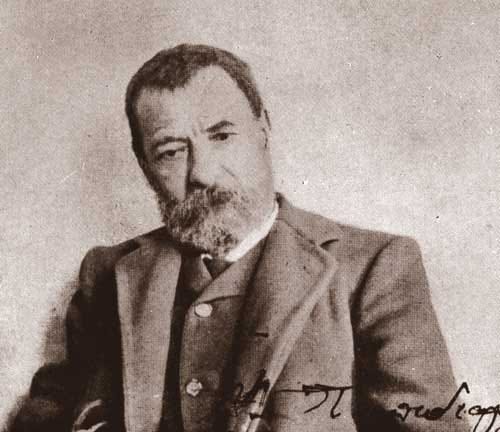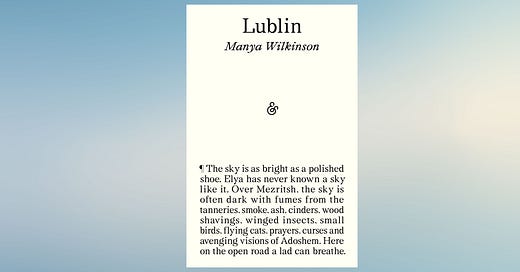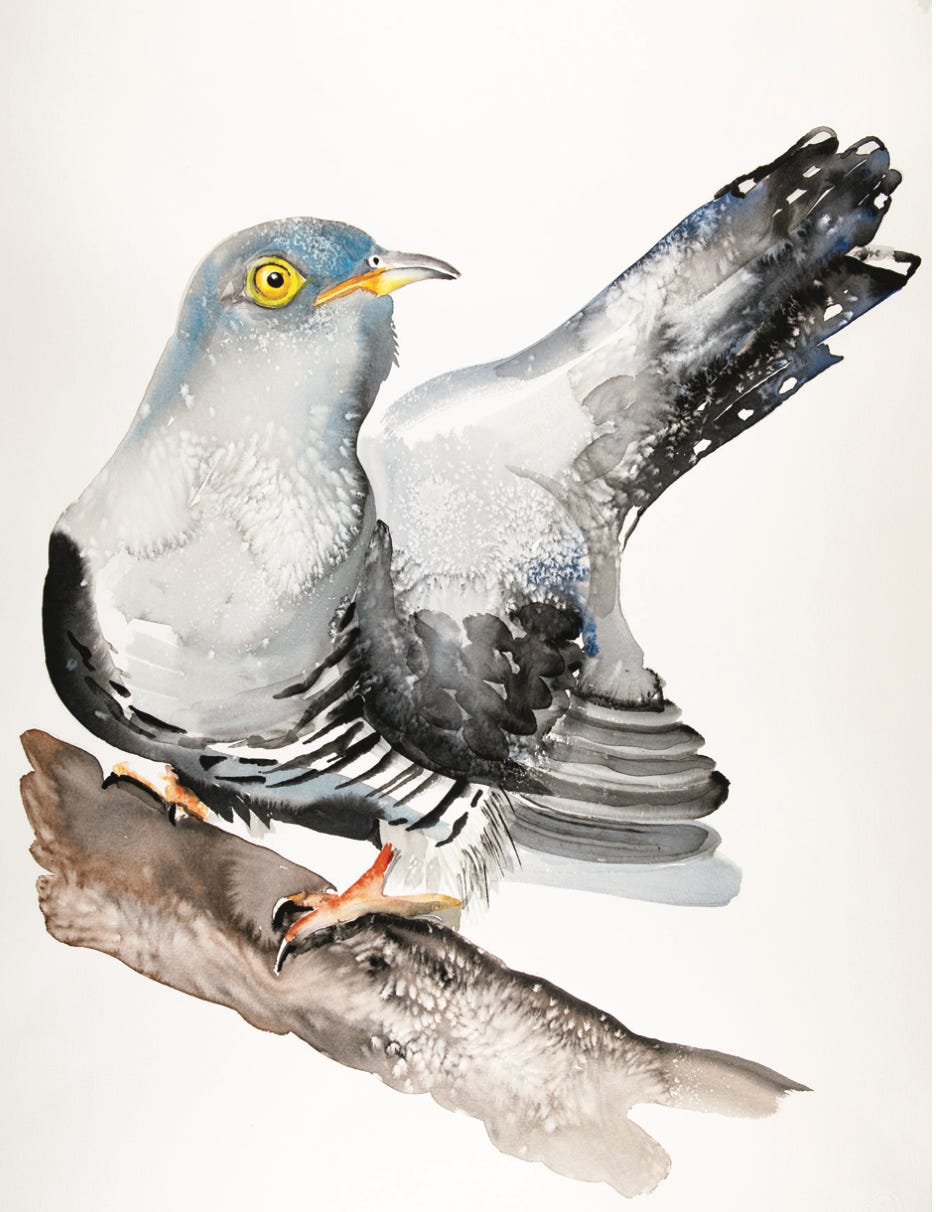The cuckoos are calling, Yiddish influence, and art that leaves us be
With Manya Wilkinson and Laird Hunt
A couple of weeks ago, a friend told me with some sadness that her parents never spoke Hindi around the house when she was a child. She now can’t speak a word of her ancestral mother tongue — but what upset her most is that she won’t be passing it on to any further generations of her family.
In today’s issue, the Wingate Prize winner Manya Wilkinson talks about the Yiddish language, which is now spoken by at least 10 million fewer people than before the Holocaust. Despite its decline, she traces places where she thinks it might have shaped some of the cadence and structures of contemporary fiction today, and how her own novel Lublin was inspired by the idiosyncrasies of the language.
I empathise with my friend’s worry; I have a rudimentary grasp of Bengali after the years have undone what I learned from my grandparents as a child. But amongst the few words I’ve retained — and worked hard not to lose — are phrases that have no direct translation to English, that have an edge of humour and shrewdness that is only really expressed when spoken in the original tongue.
Manya’s piece made me consider how the parts of Bengali I can no longer easily recall can be traced in other, less obvious, ways. It’s a deeply sarcastic language, for one, and I grew up with — and learned from — the sharp, dry wit my grandfather wielded. It’s nice to think that though I have to reach for words now, there’s a part of the language that has shaped me and that I can still trace somewhere within myself.
Sadia Nowshin
Junior Editor
Yiddish: misplacing what was lost
Manya Wilkinson on literature inspired by the cadence and humour of the language

Is Yiddish literature having a moment?
Well, hardly. The wonderful shtetl-set writing of Isaac Bashevis Singer, Isaac Babel and Sholem Aleichem for example, has been sadly overlooked of late; and the shtetl (which means a small Eastern European town) has been neglected as a setting for new writing. In our determination to document, in both fiction and non-fiction, the Holocaust, we may have misplaced exactly what was lost in the Holocaust — the rich culture, humour, and landscape of the Jewish shtetl where Yiddish was spoken.
The shtetl was a crucible, a container in which characters were compelled to interact, isolated from mainstream society. It was a place people seldom left, left only to journey from shtetl to shtetl, or left at their peril. Many shtetls were also timeless place, or rather they existed out of time, unaware of world events, new inventions or ideas.
In my novel, Lublin, set in the town of Mezritsh, east of Warsaw in 1907, I tried to recreate, rejoice in and lament the loss of this world in voice-driven prose, so that not only what I wrote, but how I wrote it, was inspired by Yiddish. (I also included a lot of Yiddish words in the hopes that non-Yiddish speakers would find a few they liked, pick them up and use them in their everyday life.)
While there may not be much contemporary fiction set in the Pale of Settlement — that territory within the borders of tsarist Russia where Jews were legally allowed to live — I think that the Yiddish language has actually influenced and inspired the tone, style and syntax of much prose today. The voicey cadence of Yiddish has found expression in the endless questioning, argumentativeness, self-deprecation, contradictions, and anxious debate we come across in contemporary fiction, fiction owing a debt to the Yiddish language and the Yiddish mind — to the very mouthy verbal-ness of Yiddish, and the constant tension between the speaker and the world, the idea that kvetching is not simply “complaining” but a way of life.
Manya Wilkinson is a Jewish New Yorker who lives in the North of England. She’s a retired senior lecturer in creative writing at Newcastle University. Her radio dramas have been broadcast on BBC Radio 4. Her novel Lublin, winner of the 2025 Wingate prize, was published by And Other Stories.
Manya joined Erica Wagner on the latest episode of the Boundless podcast — listen on Spotify / Apple Podcasts
She’s currently reading The City and the House, by Natalia Ginzburg
The curse of cultural hand-holding
Laird Hunt laments the literalism of contemporary literature

In a recent essay for the New Yorker, Namwali Serpell rightly bemoans the capture of much of contemporary cinema by what she calls the New Literalism, movies that don’t just take their viewers reassuringly by the hand but feel they also have to condescendingly yank them along. Heavy dollops of redundancy are central to the phenomenon. In Gladiator 2, for example, the main gladiator bro, played by the brilliant but slightly miscast Paul Mescal, doesn’t just kill someone, he has to immediately offer up some five-cent philosophy about what he’s done. Serpell detects similar sledge-hammer gestures in Oscar contenders like Emilia Perez and the gorgeous but kinda boring second instalment of Dune.
The stylistic ‘Raid kills bugs dead’-ification of high-brow film isn’t limited to content vehicles according to Serpell; Ramell Ross’s ‘artsy’ first-person adaptation of Colson Whitehead’s third-person Pulitzer winning Nickel Boys can’t resist intersplicing explainy, emotion-charged historical footage and clips from The Defiant Ones to make sure we know [he knows] what’s what. As Serpell says in evoking Roland Barthes’ apposite notion of studium — photographs which by way of historical, social, or cultural meanings provoke enthusiastic buy-in and get people on side — ‘This is useful, in its way, but it’s not art.’ ‘Saying the quiet part out loud has given way to a general loudness,’ she goes on, having pointed to, along the way, the heavy-handed image of an upside-down Statue of Liberty (immigration for the desperate and destitute isn’t straightforward, guys…) in Brady Corbet’s The Brutalist. Hard agree. This got me thinking about analogous contemporary novels.
I wasn’t doing said thinking in a vacuum: I was in the middle of reading Peter Levi’s translation of The Murderess by Alexandros Papadiamantis (NYRB Classics) when Serpell’s essay caught my eye. Negotiating Papadiamantis’s glittering 19th-century nightmare of a novella, which was written in a prickly, vernacular-inflected Greek that Levi carries across with resourcefulness, about a woman on the Sporadic island of Skiathos who murders babies and drowns little girls because of the unspeakable fate she believes awaits them, I’d already found myself wishing there was a more prominent place in our contemporary literary eco-system for books like Papadiamantis’s. Unlike so much of what these days most frequently earns praise, The Murderess is both utterly gripping and complicated: if there is fiery love, deep gratitude, extraordinary landscapes, madcap capers, and enduring friendship, there is also the aforementioned murder of innocents, mother beating, sister stabbing, gang rape and both implicit and explicit patriarchal malfeasance.
Never once does Papadiamantis make clear, as so many contemporary writers apparently feel they must, whether in the pages of their novels and stories or in essays and/or interviews and social media feeds, where he stands on either the sublime or awful of his character and her world.
Laird Hunt’s novels include Neverhome and Zorrie, a finalist for the National Book Award. A 2024 Guggenheim fellow in fiction, his most recent book is Float Up, Sing Down, a collection of stories set across a single day in Indiana, which was longlisted for the Carnegie Medal for Excellence in Fiction.
Laird is reading In the Skin of a Lion by Michael Ondaatje; We Pretty Pieces of Flesh by Colwill Brown and Patrimonies, Essays on Generational Thinking by George Kouvaros
Cuckoo Cuculus canorus
Female cuckoos are always parasitic on the same breed of bird that raised them as a chick.
Jim Moir’s More Birds was published by Unbound in 2024






